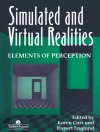‘What an extraordinary volume! This book brings together current research integrating adolescent risk and protection across a wide range of topics and disciplines. It is a major contribution to the field.’
— Robert Wm. Blum, MD, MPH, Ph D, Professor and Director, Center for Adolescent Health and Development, University of Minnesota
‘This book is clearly the best source now available on the topic of adolescent risk taking and its prevention. With chapters written by the very best people in the field, describing the latest thinking and findings, it is an essential guide and resource for prevention researchers and program developers.’
— Bruce Simons-Morton, Ed D, MPH, Chief, Prevention Research Branch Division of Epidemiology, Statistics, and Prevention Research, National Institute of Child Health and Human Development
‘This report shines a bright light on the road our nation has taken to improve adolescent health, the approaching fork, and the path most likely to attain our destination.’
— Lloyd J. Kolbe, Ph D, Director, Division of Adolescent and School Health, U.S. Centers for Disease Control And Prevention
‘Reducing Adolescent Risk: Toward an Integrated Approach weaves together current research findings with prevailing prevention strategies to shed further light on the developmental pathways leading to a variety of interrelated adolescent risk behaviors. In doing so, the authors skillfully make the case for more integrated policy approaches and for comprehensive programming at the community level that both recognizes the connections between risk behaviors and maximizes young people′s positive potential.’
— Karen Pittman, Executive Director, The Forum for Youth Investment & President, Impact Strategies, Inc.
Many risk behaviors have common developmental pathways. However, most prevention strategies approach adolescent risk behaviors as individual problems requiring separate solutions. This policy of treating one behavior at a time encourages a fractured approach to adolescent health.
Reducing Adolescent Risk: Toward an Integrated Approach focuses on common influences that result in a number of interrelated risk behaviors in order to design more unified, comprehensive prevention strategies. Edited by Daniel Romer, this book summarizes presentations and discussions held at the Adolescent Risk Communication Institute of the University of Pennsylvania Annenberg Public Policy Center. Concentrating on common causes for varied risk behaviors, a group of leading researchers and intervention specialists from different health traditions synthesize current knowledge about risks to adolescent health in several areas, including drugs and alcohol, tobacco, unprotected sex, suicide and depression, and gambling.
Promoting healthy adolescent development, this innovative volume includes
- Results of the National Risk Survey
- Contributions from experts on adolescent decision making and problem solving
- Research agendas for programs that reduce multiple risks
- Potential intervention strategies to reduce more than one risk at a time
- Major findings from the conference that should be pursued in future research
Primarily intended for graduate students, scholars, and researchers in psychology, sociology, social work, and public health, Reducing Adolescent Risk is also an extraordinary resource for policy makers in government organizations and foundations.
İçerik tablosu
Preface – Daniel Romer
1. Prospects for an Integrated Approach to Adolescent Risk Reduction
PART I. ADOLESCENTS AS DECISION MAKERS
Section A. Differing Views of Adolescent Decision Making
2. Changing Views on the Nature and Prevention of Adolescent Risk Taking – James Byrnes
3. Is Decision Making the Right Framework for Research on Adolescent Risk Taking? – Laurence Steinberg
4. The Two Faces of Adolescent Invulnerability – Daniel Lapsley
Section B. Affect, Risk Perception, and Behavior
5. Risk Perception: Construct Development, Links to Theory, Correlates, and Manifestations – Susan Millstein
6. Affect, Analysis, Adolescence, and Risk – Paul Slovic
7. Toward an Understanding of the Role of Perceived Risk in HIV Prevention Research – Martin Fishbein
8. Alcohol and Illicit Drugs: The Role of Risk Perceptions – Lloyd Johnston
9. Adolescents′ Risk Perceptions and Behavioral Willingness: Implications for Intervention – Meg Gerrard, Frederick X. Gibbons, & Michelle L. Gano
Section C. Problem-Solving Approaches
10. A Problem Solving Approach to Preventing Early High-Risk Behaviors in Children and Preteens – Myrna Shure
11. Contemporary School-Based Prevention Approaches and the Perceived Risks & Benefits of Substance Use – Kenneth Griffin
12. Decision-Making Competence & Risk Behavior – Andrew Parker & Baruch Fischhoff
13. Time Perspective: A Potentially Important Construct for Decreasing Health Risk Behaviors Among Adolescents – Geoffrey T. Fong & Peter A. Hall
14. The Influence of School Atmosphere and Development on Adolescents′ Perceptions of Risks and Prevention: Cynicism Versus Skepticism – Maria D. La Russo & Robert L. Selman
PART II. COMMON PATHWAYS & INFLUENCES ON ADOLESCENT RISK BEHAVIOR
Section A. Multiple-Problem Youth
15. Preventing Multiple Problem Behaviors in Adolescence – Anthony Biglan & Christine Cody
16. Screening & Early Intervention for Antisocial Youth Within School Settings as a Strategy for Reducing Substance Use – Herbert Severson, Judy Andrews, & Hill M. Walker
17. Preventive Interventions for Externalizing Disorders in Adolescents – Ken C. Winters, Gerald August, & Willa Leitten
Section B. Personality and Other Dispositions
18. Genetic Basis of Substance Use and Dependence: Implications for Prevention in High-Risk Youth – Caryn Lerman, Freda Patterson, & Alexandra Shields
19. Health Risk Takers and Prevention – Lewis Donohew, Philip Palmgreen, Rick Zimmerman, Nancy Harrington, & Derek Lane
20. Cognitive Vulnerability to Depression: Implications for Adolescent Risk Behavior in General – Lauren B. Alloy, Lin Zhu, & Lyn Abramson
Section C. Peers and Parents
21. EMOSA Sexuality Models, Memes, and the Tipping Point: Policy & Program Implications – Joseph Rodgers
22. Sustaining and Broadening Intervention Effect: Social Norms, Core Values, and Parents – Bonita Stanton & James Burns
Section D. Media Interventions
23. Adolescent Risk Behavior Research and Media-Based Health Messages – Barbara Delaney
24. Using Beliefs About Positive and Negative Consequences as the Basis for Designing Message Interventions for Lowering Risky Behavior – Joseph Cappella, Marco Yzer, & Martin Fishbein
PART III. PERSPECTIVES FROM DIFFERENT RISK-RESEARCH TRADITIONS
Section A. Gambling
25. Adolescent Gambling: Risk Factors and Implications for Prevention, Intervention, and Treatment – Mark Griffiths
26. Understanding Youth Gambling Problems: A Conceptual Framework – Jeffrey Derevensky, Rina Gupta, Laurie Dickson, Karen Hardoon, & Anne-Elyse Deguire
27. A Perspective on Adolescent Gambling: Relationship to Other Risk Behaviors and Implications for Prevention Strategies – Marc Potenza
28. Why Pay Attention to Adolescent Gambling – Rachel Volberg
Section B. Sexual Behavior
29. Risk and Protective Factors Affecting Teen Pregnancy and the Effectiveness of Programs Designed to Address Them – Douglas Kirby
30. Healthy Sexual Development: Notes on Programs that Reduce the Risk of Early Sexual Initiation and Adolescent Pregnancy – Mignon Moore & Jeanne Brooks-Gunn
31. Adolescent Sex and the Rhetoric of Risk – J. Dennis Fortenberry
Section C. Suicide
32. Suicide Risk Among Adolescents – Madelyn Gould
33. Some Strategies to Prevent Youth Suicide – David Brent
34. Implications of Focusing on Black Youth Self-Destructive Behaviors Instead of Suicide When Designing Preventative Interventions – Sean Joe
Section D. Alcohol and Drugs
35. Alcohol, Tobacco, and Marijuana Use Among Youth: Same-Time and Lagged and Simultaneous-Change Associations in a Sample of 9- to 18-Year-Olds – Robert Hornik
PART IV. OVERARCHING APPROACHES & RECOMMENDATIONS FOR FUTURE RESEARCH
36. Positive Youth Is Necessary and Possible – Brian Flay
37. Youth Development Programs and Healthy Development: A Review and Next Steps – Jodie Roth & Jeanne Brooks-Gunn
38. A Contextual Perspective for Understanding and Preventing STD/HIV Among Adolescents – Ralph Di Clemente, Gina Wingood, & Richard A. Crosby
39. Findings & Future Directions – Kathleen Jamieson & Daniel Romer
Appendix A
Appendix B
References
Index
About the Editor
About the Contributors
Yazar hakkında
Daniel Romer received a Ph.D. in Social Psychology from the University of Illinois at Chicago in 1974. He is currently Research Director at the Institute for Adolescent Risk Communication at the Annenberg Public Policy Center, University of Pennsylvania.












